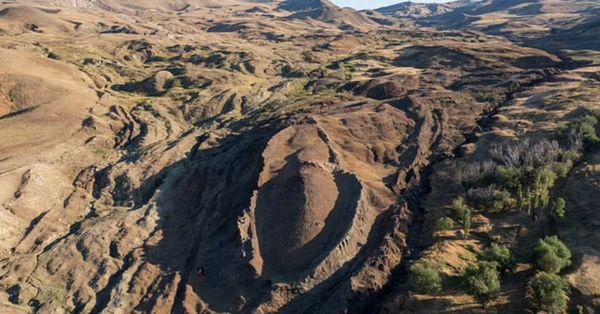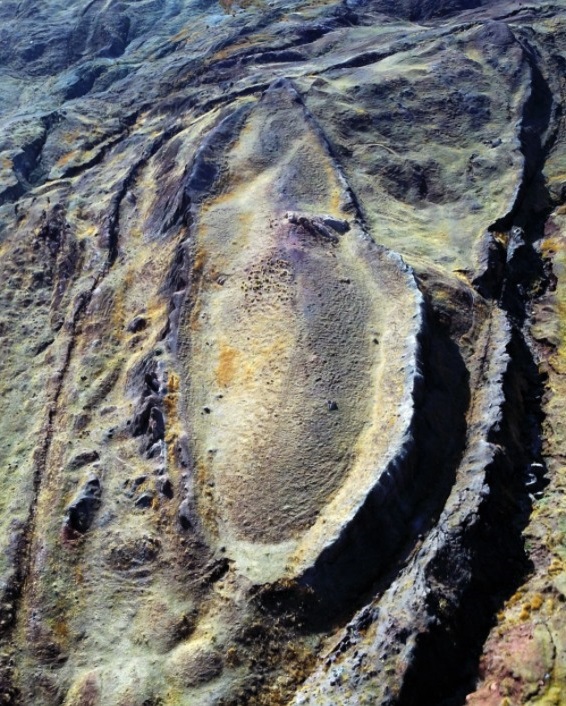
In the realm of biblical archaeology, one of the most captivating quests has been the search for Noah’s Ark. According to the Bible, Noah’s Ark saved Noah, his family, and pairs of every species from a devastating global flood. Recently, a team of archaeologists has made significant progress in confirming the legendary resting place of Noah’s Ark.
Located in the Doğubayazıt district of Ağrı, Turkey, a boat-shaped mound has caught the attention of archaeologists since its discovery in 1956. This site closely aligns with the biblical account, which states that the Ark settled on the “mountains of Ararat” in Turkey after a 150-day flood. The mountain itself, standing at an impressive 16,500 feet, resembles an ark carved by nature.
The expedition, led by experts from Istanbul Technical University, Andrew University, and Ağrı İbrahim Çeçen University, began in 2021 and continues to this day. Their research involves the analysis of rock and soil samples collected from the site to uncover conclusive evidence of Noah’s Ark.
In December 2022, the team analyzed 30 samples of rock and soil fragments in the ITU laboratory. The preliminary findings have sent shockwaves through the archaeological community. The samples contained clayey and marine materials, along with traces of seafood. These discoveries strongly suggest human activity at the boat-shaped mound, dating back to a period between 5500 and 3000 BC.
Dating human activity to this era aligns closely with the biblical timeline of the Great Flood, which occurred approximately 5,000 years ago. However, the researchers remain cautious, acknowledging that further extensive work and research are necessary to conclusively validate the presence of Noah’s Ark at this site.
Professor Faruk Kaya, Vice Rector of AİÇÜ, commented on the findings, stating, “The initial findings from our studies indicate human activities in the region during the Chalcolithic period, spanning from 5500 to 3000 BC. It is widely believed that the flood of Prophet Noah took place 5,000 years ago. These laboratory results suggest that life indeed thrived in this region during that period. However, we must refrain from unequivocally claiming the discovery of the Ark. This quest will require extensive and meticulous research.”
While these discoveries are intriguing, they do not provide definitive proof of Noah’s Ark’s existence. The researchers are aware of the skepticism surrounding their quest and are committed to conducting rigorous and comprehensive scientific investigations to substantiate their findings.
The debate about the Ark’s location includes the geological history of Mount Ararat itself. Some argue that Mount Ararat cannot be the Ark’s location because the mountain formed after the floodwaters receded. This divergence in interpretation underscores the complexity of the Noah’s Ark narrative and the various perspectives that surround it.
The pursuit of Noah’s Ark remains an enigmatic and controversial endeavor. While some continue to search for this iconic vessel, others approach the story with skepticism, emphasizing the symbolic and allegorical aspects within religious texts.
Regardless of the final outcome of this archaeological journey, the quest to validate the existence of Noah’s Ark is a testament to humanity’s enduring curiosity about our past. It reminds us that the relentless pursuit of knowledge and understanding is an integral part of our shared human experience.
In conclusion, the archaeological expedition in Turkey has brought us closer to potentially confirming the existence of Noah’s Ark. Through the meticulous analysis of rock and soil samples, researchers have uncovered evidence of human activity dating back to an era closely associated with the biblical account of the Great Flood. However, it is essential to approach these findings with cautious optimism, recognizing that further extensive research is necessary to definitively establish the presence of Noah’s Ark at this site. Regardless of the outcome, this quest epitomizes the enduring human drive to unravel ancient mysteries, exploring the nexus of faith, history, and science.






